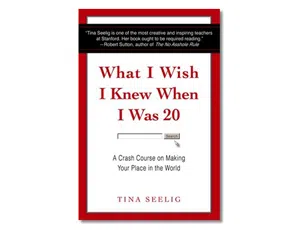The reasons people talk about products and services and the best ways to seed discussions.
Emanuel Rosen is the author of the national bestseller The Anatomy of Buzz (Doubleday, 2000) and The Anatomy of Buzz Revisited: Real-life lessons in Word-of-Mouth Marketing (Doubleday, 2009). Prior to writing these books, he was vice-president of marketing at Niles Software where he was responsible for launching and marketing the company’s flagship product, EndNote. He holds an MBA from the University of San Francisco. In this interview he brings us up to speed on the techniques for generating buzz that every small business owner must master.
Going back to fundamentals, why do people talk about products and services at all?
Buzzing is in our genes. We are programmed to share information with friends about where to find our next meal and about the tiger who’s about to have us as his next meal. We talk to connect, so when my daughter tells her friends about the new sweater she bought, she’s also establishing and maintaining her social ties. We buzz to talk about ourselves. If I tell you about a 10 day dog sledding trip in Alaska, I’m also telling you how adventurous I am.
Which comes first, buzz or ink?
Usually it starts with some buzz that is followed by press coverage, which can take the buzz to a whole new level. Grassroots support can actually help you get ink—sometimes buzz is the best press release because it gives journalists this warm and fuzzy feeling that your story is for real, and that there’s true excitement for it. Don’t get me wrong, if CNN calls you before your product is out, don’t tell them that you’re waiting for some grassroots buzz to build, but usually it doesn’t happen that way.
Which comes first, buzz or sales?
There are some highly anticipated products — Halo 3 comes to mind — that get tons of buzz before a single sale. This is the exception. Since product recommendation usually starts with product experience, you need to have some people out there who use the product and hopefully get excited about it. How do you get these early customers? Part of it comes from word-of-mouth marketing methods like seeding and sneak previews, but it also comes from traditional sales and marketing techniques. If your product is contagious in some way, then these early users will start buzzing about it.
What are the essential elements of seeding a product?
The key point to understand is that although we’re all connected to each other, information about new products rarely spreads like a wild fire. Information tends to get stuck because we live in somewhat isolated social clusters. To accelerate buzz, companies seed their product in many different clusters. The ideal seeding campaign is done on a large scale and lets people have a first-hand experience with the product. You want to reduce the price barrier as much as possible, so the product is given for free or at a reduced price.
How do you seed a Web site or free service?
The good news is that the price barrier doesn’t exist. The bad news is that the thing you’re seeding is less tangible. The basic idea is the same. You identify clusters of people by geography, area of interest, by academic discipline, or whatever other classification makes sense in your case. You then approach some people in each cluster trying to engage them with the service. This is a challenge that is shared by other products. The fact that a publisher seeds the market with advance copies of a book doesn’t guarantee that people will read it. But with some follow up and encouragement, and some buzz from fellow users, some more people eventually try the product and start buzzing about it too.
What are the characteristics of a contagious product?
The best buzz comes not from publicity stunts but rather from the product itself. A product or service that makes you say “Wow!” when you use it for the first time is the classic contagious product. Other examples: Products that evoke strong emotions—The Blair Witch Project—or reward you for talking about them—Facebook.
Products that are visible can be contagious as well—think of the first time you saw someone with an iPod. Even abstract ideas can become contagious this way. The idea of living with cancer was translated into the LiveStrong yellow wristband which started millions of conversations about the topic.
What can stop the spread of buzz?
Since I just mentioned LiveStrong, let me tell you about an interesting study. A research team at Stanford sold LiveStrong wristbands to students who lived in one dorm on campus. A week later, they started selling these wristbands in a neighboring dorm that had a reputation as a “geek” dorm with a stronger academic focus.
What happened once the “geeks” started wearing the wristbands? A week later, the research team measured a 32% drop in students wearing the bands at the first dorm. So sometimes, when we detect that “the wrong people” are using your product, we stop using it and buzzing about it. This is true especially for products that have to do with our identity.
The most common forces that block buzz are noise, inertia, and forgetting. We’re distracted by competing messages, we like to stick to “the good old way” of doing things and we forget what our friends told us. It is one reason why buzz needs to be accelerated. Even delighted customers might forget about your product and run out of opportunities to talk about it.
What should you do if someone is bad-mouthing your product who has never used it?
One of the things that surprised me most as I was working on the new edition of my book was that this type of negative buzz is quite common. One study found that 30% of negative word of mouth was by people who never owned the product. If you can identify the person who’s bad-mouthing your brand, you might want to let them try the product. The problem is that you usually don’t know who they are, which brings us to another reason for why word-of-mouth marketing is so important. You have to counterbalance this constant trickle of negative comments with honest, positive recommendations from happy customers.
What should you do if someone is bad-mouthing your product who has used it?
First, listen to what they are saying. Our natural tendency when we’re attacked is to fight back, but negative comments may come from an actual bad experience. This gives you an opportunity to do two things. Solve that customer’s problem, which will often turn her from a detractor to a promoter. Even more important, it may help you identify a problem in your system, fix it and reduce negative buzz from others.
Who is more likely in these Internet days to talk about your product: someone who’s had a good experience or a bad one?
There are two types of “bad experience.” There’s “I didn’t like this hotel too much” and there’s “the guy at the reception insulted me when I asked for towels and then sent up a dirty one.” Frustrated customers are very likely to share their experience. However, it turns out that most buzz among consumers is positive. This may seem like a contradiction but it has some simple explanations. One of them is that most of our experiences as consumers are actually positive.
What is the role of old-fashioned advertising these days?
It is fashionable to say that advertising is dead, but I don’t agree. Very few products can live on buzz alone. Advertising can help a lot—at least good advertising can help a lot. First, in creating awareness and building the pool of people who can buzz about the product. Second, a good ad can prompt me to tell my friends about the product. Third, a good, authentic ad that brings in real people can stimulate buzz.
How has technology changed buzz and word-of-mouth marketing?
It hasn’t really changed what we talk about. We still talk about ourselves, we brag, we seek advice, we gossip, we connect. The Internet’s biggest effect is that it accelerates buzz. In addition, it doesn’t only let us tell our friends about the products we use, but also lets us show them these products through videos and photos. It has enabled aggregation tools such as Yelp or TripAdvisor. In essence, it gives more people more opportunities to share information with others, which directly translates to more buzz.
How can a company effectively measure the buzz its generating?
The simplest method is to ask your customers how they heard about you. You can measure the daily mentions you get on blogs and on Twitter. You can supplement this with traditional marketing research to learn what customers who don’t use these services are saying. Whatever method you choose though, you need to measure on an ongoing basis, if you want to detect any effects. Companies such as ChatThreads, The Keller Fay Group, and Nielsen Online provide buzz measuring services. WOMMA, the Word-of-Mouth Marketing Association, offers lots of resources on the subject.
Do you believe that there are key influencers who companies should focus on because of these folks’ insight, power, and prestige—that is, an ability to lead a market as their wisdom trickles down?
The importance of influencers varies by industry. I suspect that they are more important in the pharmaceutical industry than in the yo-yo industry. Regarding the “trickle down” theory—this is not the way that buzz flows—especially today, buzz flows in all directions. I use the term hubs to describe people who talk more than average, and I make a distinction between social hubs and expert hubs. Both can definitely help a company spread the word, but companies should encourage everyone to talk, not only hubs.
Where do you draw the ethical line on generating buzz and word-of-mouth marketing?
One key idea here is disclosure. Word-of-mouth marketing is not about tricking people. It’s about openly inviting them to try the product and talk about it. WOMMA offers a code of ethics that can help. When you’re trying to build buzz, you want to push the envelope and think outside of the box. And when you look for original ideas, you can’t police your thoughts. But after the brainstorming, you have to change your attitude dramatically. This is best done the morning after—over some strong coffee. Think again about your wild new idea. Ask other people what they think. Ask your customers and people in the community if you are crossing the line.
Guy Kawasaki is the chief evangelist of Canva and the creator of Guy Kawasaki’s Remarkable People podcast. He is an executive fellow of the Haas School of Business (UC Berkeley), and adjunct professor of the University of New South Wales. He was the chief evangelist of Apple and a trustee of the Wikimedia Foundation. He has written Wise Guy, The Art of the Start 2.0, The Art of Social Media, Enchantment, and eleven other books. Kawasaki has a BA from Stanford University, an MBA from UCLA, and an honorary doctorate from Babson College.


